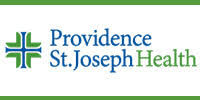- June 1,2018 | ISSN 1940-6967
- The National Association Of Medical Doctors
Featured Sponsors
Doctors Suggest Less Chemo, Surgery For Some Cancer Treatments
By Peter Loftus
New studies have bolstered a push to take a less-is-more approach in treating cancer that could spare patients from tough side effects and high costs, without jeopardizing their survival.
The latest studies suggest this approach can work. One federally funded study, presented Sunday, showed that many women with early-stage breast cancer could safely skip commonly used chemotherapy after surgery. Doctors said the finding could spare tens of thousands of women a year from chemo side effects such as nausea and early menopause.
Another study presented at the meeting concluded that many patients with advanced kidney cancer could forgo kidney-removal surgery, a common treatment, and instead take Pfizer Inc.’s Sutent drug. Pfizer and the French health ministry funded the trial.
A separate recent study, funded by a U.K. health institute, showed that reducing treatment with Roche Holding AG’s breast-cancer drug Herceptin to six months from 12 months spared some patients from the medication’s potential heart-related side effects and its cost without sacrificing effectiveness.
The studies are part of a growing movement among cancer doctors and researchers to de-escalate treatments for certain tumor types, as drugs become increasingly expensive. The average U.S. monthly price of oncology drugs more than doubled to $15,535 in 2015 from $7,103 in 2006, according to a May report in the Journal of Oncology Practice. Overall U.S. spending on cancer drugs doubled from 2012 to 2017, to nearly $50 billion, according to IQVIA Institute for Human Data Science.
The rising costs have led patients and health insurers to question the “assumption that the maximum dose that they can physically cope with is the right dose,” said Christopher McCabe, CEO and executive director of the Institute of Health Economics, a health-policy nonprofit in Edmonton, Alberta.
Many of the studies testing reduced treatments are funded by government agencies because drugmakers “don’t tend to want to do studies that eliminate treatments,” said Dr. Monica Bertagnolli, chief of surgical oncology at Dana-Farber/Brigham and Women’s Cancer Center in Boston and president-elect of ASCO.
Health insurers, government health programs and some doctors have been pressing drugmakers for several years to curb cancer-drug prices, saying they are straining health-care budgets and forcing some patients to skip treatment.
Drugmakers could face sales pressure if more doctors curtail treatments as a result of new studies, or if insurers start limiting reimbursement. “It is of course a threat, but I think it’s the right thing to do,” AstraZeneca PLC CEO Pascal Soriot said in an interview Sunday. “The debate should happen.”
Mr. Soriot said sales of a new wave of drugs that harness patients’ immune systems to destroy cancer cells could become vulnerable to efforts to cut treatment, particularly if they are used more often in earlier stages of disease. Most of these drugs cost more than $12,000 a month, and doctors haven’t settled on the optimal duration of therapy. AstraZeneca sells an immunotherapy called Imfinzi to treat bladder and lung cancers.
Dr. S. Vincent Rajkumar, a blood-cancer specialist at the Mayo Clinic in Rochester, Minn., and critic of drugmakers’ pricing practices, cautioned that companies could seek to preserve sales by raising U.S. prices to offset reduced usage.
The approach doesn’t always pan out. A study in the U.K. found that leukemia patients receiving a reduced dose of the drug Rituxan fared worse than those who took the standard dose, according to results published last year in the journal Leukemia.
Drug companies say they test various doses of drugs in clinical developmentto arrive at the optimal dose. “We have our own very solid body of evidence,” said Sandra Horning, chief medical officer at Roche’s Genentech unit. She noted that previous studies have shown 12 months to be the best duration for Herceptin treatment.
The opportunity to trim treatments for breast cancer is significant because the patient population is large. The American Cancer Society estimates about 266,000 new cases of invasive breast cancer will be diagnosed this year in American women, and about 40,920 women will die from the disease.
In about half of all breast-cancer cases, tumor growth is fueled by hormones but hasn’t yet spread to lymph nodes. Standard treatment for these patients is surgery, followed by drug treatment to prevent relapse. Many women get a combination of chemotherapy and hormonal therapy, based partly on recommendations from the National Institutes of Health in 2000.
In 2006, the National Cancer Institute started a large clinical trial to test whether women at intermediate risk of recurrence could safely skip chemotherapy. The study enrolled more than 10,200 women with hormone-receptor-positive breast tumors that hadn’t spread to nearby lymph nodes, and didn’t test positive for the HER2 protein, which promotes tumor growth.
Researchers assessed patients’ risk of recurrence by using a genetic test of tumor samples, Genomic Health Inc.’s Oncotype DX, which can identify genes associated with recurrence. Women found to have a low risk were assigned to receive hormone therapy alone, while those at high risk received both hormone therapy and chemotherapy. In the middle-risk group, more than 6,700 women were assigned either the combination or hormone therapy alone.
Nine years after the start of treatment, some 83.3% of patients who received hormone therapy alone were free of invasive disease, versus 84.3% of those who had also gotten chemotherapy.
“You can spare tens of thousands of women per year the need for chemotherapy in this setting with a high degree of confidence,” Dr. Joseph A. Sparano, associate director for clinical research at the Albert Einstein Cancer Center and Montefiore Health System in New York and lead investigator of the study, said in an interview.
There were some subgroups of patients in the middle-risk category—those on the higher side—who might still benefit from the combination, he said.
The genomic test costs about $4,500 per patient, according to Genomic Health. The cost of chemotherapy can range from $40,000 to $80,000 for treatment after breast surgery, Dr. Sparano said.
Phyllis Laccetti, a participant in the study, took the hormonal therapy tamoxifen alone for five years after having a mastectomy in 2007 to treat her breast cancer, even though her doctor’s initial recommendation was to also receive chemotherapy. Ms. Laccetti, 58 years old and a nurse at Montefiore, said the only side effects were menopausal symptoms. She has been cancer-free since stopping tamoxifen in 2012, she said.
Ms. Laccetti said several family members had tough experiences on chemotherapy. “If I had to take it, I would have taken it and I would have dealt with it,” she said. “I was kind of relieved they chose that I didn’t have to do the chemo.”
Articles in this issue:
- Doctors Suggest Less Chemo, Surgery For Some Cancer Treatments
- Doctor Bought Jet And Maserati From Proceeds Of Unnecessary Chemotherapy, Authorities Say
- Gene Variant Linked To Opioid Addiction Found In Euro Americans
- Doctor Pay Tops $257K For Primary Care, $425K For Specialists
- Controlling Cell Recycling May Help Ease Aging
- Our Faces Show What We Want, Not What We Feel
- First-Ever Who List of Essential Diagnostic Test To Improve Diagnosis and Treatment Outcomes
Top Physician Opportunities
Journal of Medicine Sign Up
Get the Journal of Medicine delivered to your inbox.
In This Issue
- Doctors Suggest Less Chemo, Surgery For Some Cancer Treatments
- Doctor Bought Jet And Maserati From Proceeds Of Unnecessary Chemotherapy, Authorities Say
- Gene Variant Linked To Opioid Addiction Found In Euro Americans
- Doctor Pay Tops $257K For Primary Care, $425K For Specialists
- Controlling Cell Recycling May Help Ease Aging
- Our Faces Show What We Want, Not What We Feel
- First-Ever Who List of Essential Diagnostic Test To Improve Diagnosis and Treatment Outcomes
Archives
Masthead
-
- Editor-in Chief:
- Theodore Massey
- Editor:
- Robert Sokonow
- Editorial Staff:
- Musaba Dekau
Lin Takahashi
Thomas Levine
Cynthia Casteneda Avina
Ronald Harvinger
Lisa Andonis
Leave a Comment
Please keep in mind that all comments are moderated. Please do not use a spam keyword or a domain as your name, or else it will be deleted. Let's have a personal and meaningful conversation instead. Thanks for your comments!















*This site is protected by reCAPTCHA and the Google Privacy Policy and Terms of Service apply.